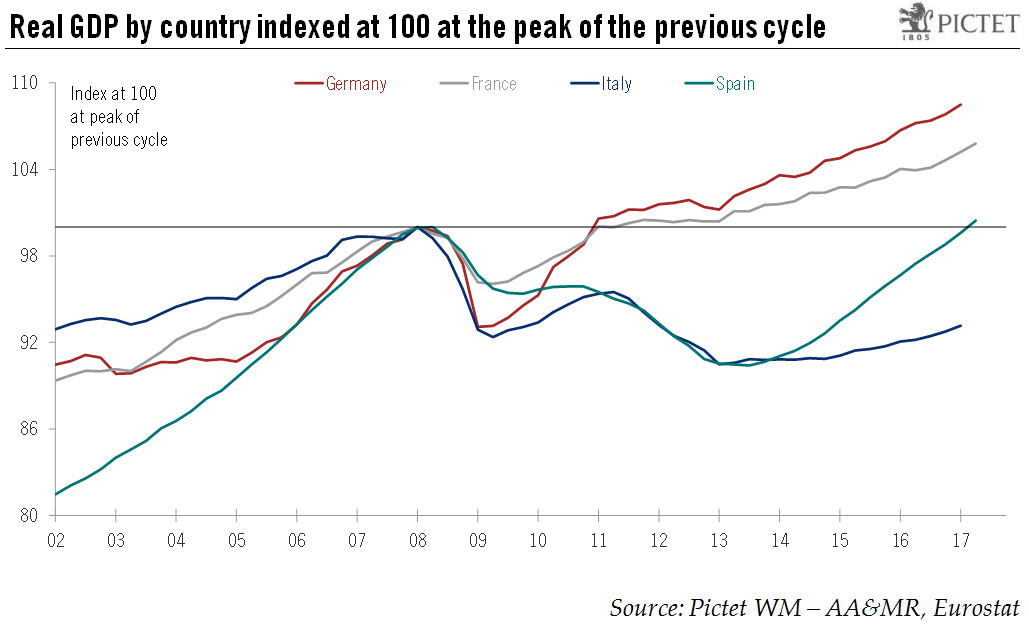The latest Q2 GDP figures published by France and Spain point to solid growth for the euro area. We maintain our euro area GDP growth forecast at 1.9% for 2017 as a whole.France and Spain today were the first big countries in the euro area to publish GDP growth figures for Q2 2017. French real GDP rose by 0.5% q-o-q in Q2 2017, the same pace as the two previous quarters. The details showed that domestic demand remained solid, while the sharp improvement in net exports offset the fall in inventories.In Spain, GDP increased by 0.9% q-o-q in Q2, its fastest pace of expansion in almost two years. Symbolically, Spanish real GDP now exceeds its pre-crisis level (2008) for the first time. Today’s quarterly growth was above our forecast which mechanically pushes up our yearly GDP forecast for
Topics:
Nadia Gharbi considers the following as important: Euro area GDP growth, french gdp growth, Macroview, spanish gdp growth
This could be interesting, too:
Cesar Perez Ruiz writes Weekly View – Big Splits
Cesar Perez Ruiz writes Weekly View – Central Bank Halloween
Cesar Perez Ruiz writes Weekly View – Widening bottlenecks
Cesar Perez Ruiz writes Weekly View – Debt ceiling deadline postponed
The latest Q2 GDP figures published by France and Spain point to solid growth for the euro area. We maintain our euro area GDP growth forecast at 1.9% for 2017 as a whole.

France and Spain today were the first big countries in the euro area to publish GDP growth figures for Q2 2017.
French real GDP rose by 0.5% q-o-q in Q2 2017, the same pace as the two previous quarters. The details showed that domestic demand remained solid, while the sharp improvement in net exports offset the fall in inventories.
In Spain, GDP increased by 0.9% q-o-q in Q2, its fastest pace of expansion in almost two years. Symbolically, Spanish real GDP now exceeds its pre-crisis level (2008) for the first time. Today’s quarterly growth was above our forecast which mechanically pushes up our yearly GDP forecast for 2017 from 2.8% to 3.1%.
The relatively good performance of both countries, which account for 32% of total euro area GDP, bodes well for the euro area as a whole. Only France provides a breakdown of components with this preliminary estimate, but high-frequency data suggests that growth was broad-based with an important contribution from net trade.
Overall, for the euro area, we are keeping unchanged our GDP growth forecast at 1.9% for 2017 as a whole. We continue to see a number of headwinds leading to a modest slowdown in the pace of economic expansion for the rest of this year.
